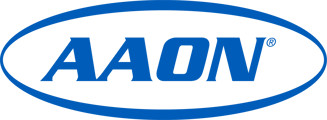Developed by AMCA International, FEI – or Fan Energy Index – is an efficiency metric for fans. Since its development, FEI has been adapted into efficiency regulations.
Understanding FEI
FEI is a ratio of the actual fan efficiency to an established baseline fan efficiency. These have both been calculated using a given airflow and pressure point. FEI is also the ratio of an actual electrical power of a fan to a baseline power.
Fans consume a lot of energy, and the FEI was established to drive energy savings and promote the efficient use of fans.
Current Standards
ASHRAE 90.1-2022 adapted FEI as its fan metric over the previous FEG (Fan Efficiency Grade) metric. In this standard it provides some minimum FEI ratings to be achieved.
In ASHRAE 90.1-2022, it states
“Each fan and fan array shall have a fan energy index FEI of 1.00 or higher at its highest design airflow rate.” However, fans embedded in AAON equipment are exempt from FEI requirements in ASHRAE 90.1-2022.
The Department of Energy (DOE) integrates ASHRAE standards into its Building Energy Codes program and has determined ASHRAE 90.1-2022 will enhance energy efficiency in commercial buildings. States are required to certify by March 6, 2026 that their commercial building codes either meet or surpass this standard.
DOE also published a ruling on May 31, 2023 establishing a new testing procedure for fans and blowers. This testing procedure incorporated industry standards including FEI. This ruling stated that manufacturers representing energy efficiency in marketing materials and product labels must be in accordance with this test procedure. This basically means, fans and blowers would need to state their FEI ratings in their materials, beginning October 31, 2023, unless a manufacturer was granted an extension.
Future Outlook
It is anticipated for FEI ratings to be adapted into more codes and regulations, federally and local. Always consult your local building codes for the latest requirements in efficiency standards.
